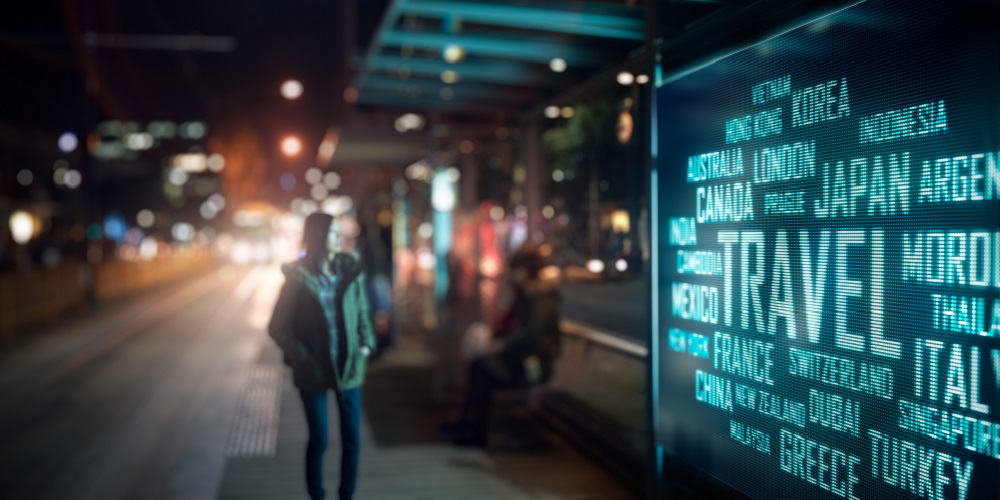After a rough few years for travel and tourism, the industry is expected to exceed pre-pandemic levels in 2023, adding $9.5 trillion to the global economy. Already, 34 countries have exceeded 2019 travel levels. That number will only grow as the summer season approaches.
With travel picking back up, providing a richer experience for everyone is critical. A resurgence in business means the travel and tourism industry needs to adjust its experiences to meet travelers’ expectations — namely, the expectation for digital integration.
During the pandemic, 40% of Americans adopted new digital tools into their lifestyle. The average person’s daily routine is immersed in technology, and they continue to seek new use cases for their lives. This raises their desire for digital accommodations as they continue to leave their homes to explore the post-pandemic world. An increase in audiovisual integration throughout the travel industry is a great way to meet that need, capitalize on the surge of new business, and cement brand relationships with customers.
Using AV to Enhance the Travel Experience
AV integration can transform the travel experience, from an Uber or bus ride to a hotel room or a restaurant. Here are just a few common ways to use AV to improve the travel experience:
Communicating Travel Information
When AV is used in the travel experience, it is largely to communicate important travel information, such as directions, status updates, weather, traffic and more. The information is often displayed on digital signage throughout facilities and even on vehicles to help passengers stay on schedule and navigate the travel experience. You’ll commonly find this kind of AV integration when traveling via bus, train or airplane.
AV equipment in these settings also provides better lighting through bright, highly visible signage. In addition, audio announcements are frequently made throughout these systems to ensure the messages are accessible to all travelers. Someone who is blind, for example, won’t see visual displays but will hear important audio announcements.
Displaying Advertisements
Advertising is another type of content commonly found on AV signs — and for good reason. After viewing an out-of-home ad, such as a digital transit station ad, 66% of viewers performed an action (such as visiting the advertiser’s website).
Modern travel enables a wealth of internet-connected screens in vehicles and hubs. In airports especially, digital signage is increasingly popular. This provides a lot of touchpoints that can be sold to advertisers to increase all parties’ bottom line.
Conveying Safety Information
AV integration is a great way to communicate information that improves safety across the board. With digital signs and kiosks, travelers can learn about the area so they can make informed decisions and stay safe. In addition, AV displays can improve lighting in certain public areas to maintain safety and awareness.
To protect against COVID-19 and other illnesses, these kinds of displays are often touchless. Travelers can access the information they need, check in to flights, purchase tickets and more without having to make contact with high-touch machines.
Integrating Into Commercial Travel
With the above usages, it’s clear that AV will soon become the new normal in transportation and tourism. Upgrading these capabilities in your locations will be crucial in providing the kind of seamless, digital travel experience people want.
To successfully incorporate AV integrations into travel and tourism businesses and hubs, consider these strategies:
Create a Content Plan
If you’re using AV for digital signage, then you need to create a content plan around what you plan to display based on the location and available resources. For example, big LED walls with music generally are used for artistic purposes. On the other hand, the monitors throughout transportation terminals most often are used for informational content.
In almost all travel situations, you have flexibility in the type of content you display. That can be a blessing and a curse, however. A blessing because you aren’t stuck with one sign until you can print out the next one. A curse because that flexibility can make deciding on the content difficult. Determining the needs of travelers will help shape your content plan. Ultimately, you should be consistent across displays while still keeping the content fresh for viewers.
Consider Location
Location is essential when integrating AV. After all, you want messages to reach people at the right time and place on the travel journey. Consider where there’s a lot of traffic, what messages must be conveyed and how high or low you want the display. Be aware of what kinds of weather elements your sign will be exposed to in the location and whether it needs to be enclosed. Fortunately, there is a range of monitors and speakers for outdoor versus indoor areas to choose from.
Set a Cadence
AV technology shows that your company is modern and current. But keeping the same content on the screen at all times negates that and can get stale. Of course, you won’t have the same travelers coming in every day to see your AV displays in a location like an airport. In a bus terminal, though, you likely will have repeat visitors. As a general rule of thumb, you should display new content at least every few months. And remember to make sure all the information is current and relevant to the audience.
AV is an integral part of the travel experience. Commercial integrators worldwide are upgrading their AV systems to meet the new needs of modern travelers. If you’re not already on board, you need to catch up before you lose more ground.
 Scott Schoeneberger is the managing partner at Bluewater, a design-forward technology company that helps support sensory storytelling across digital and physical canvases. Specializing in integration and event tech services, Bluewater creates experiential moments for brands, their projects, and events. Schoeneberger has been published in Eventbrite, Entrepreneur and Forbes Communication Council.
Scott Schoeneberger is the managing partner at Bluewater, a design-forward technology company that helps support sensory storytelling across digital and physical canvases. Specializing in integration and event tech services, Bluewater creates experiential moments for brands, their projects, and events. Schoeneberger has been published in Eventbrite, Entrepreneur and Forbes Communication Council.










